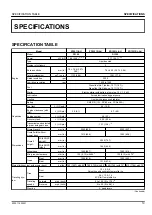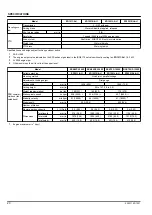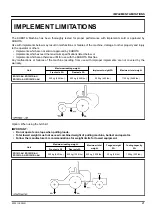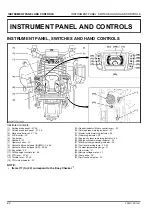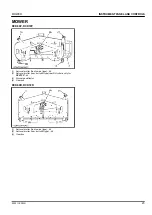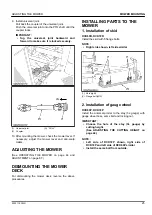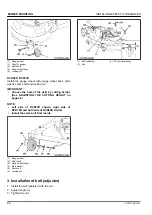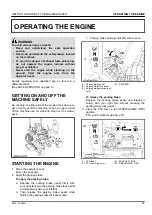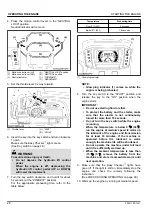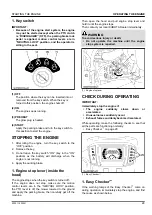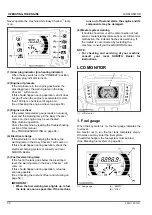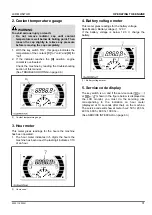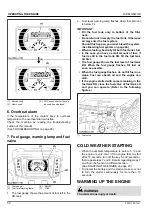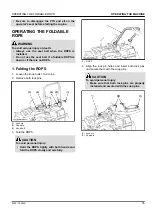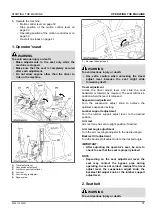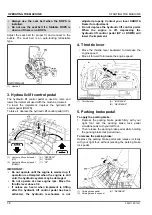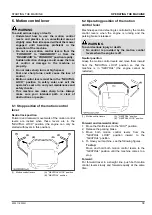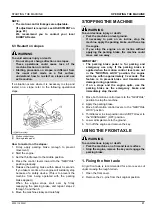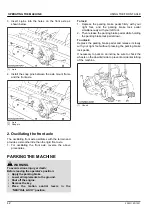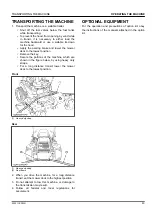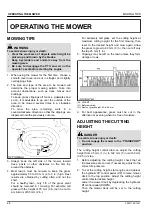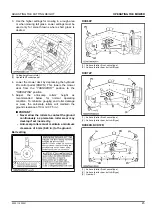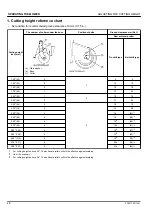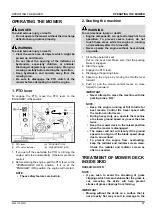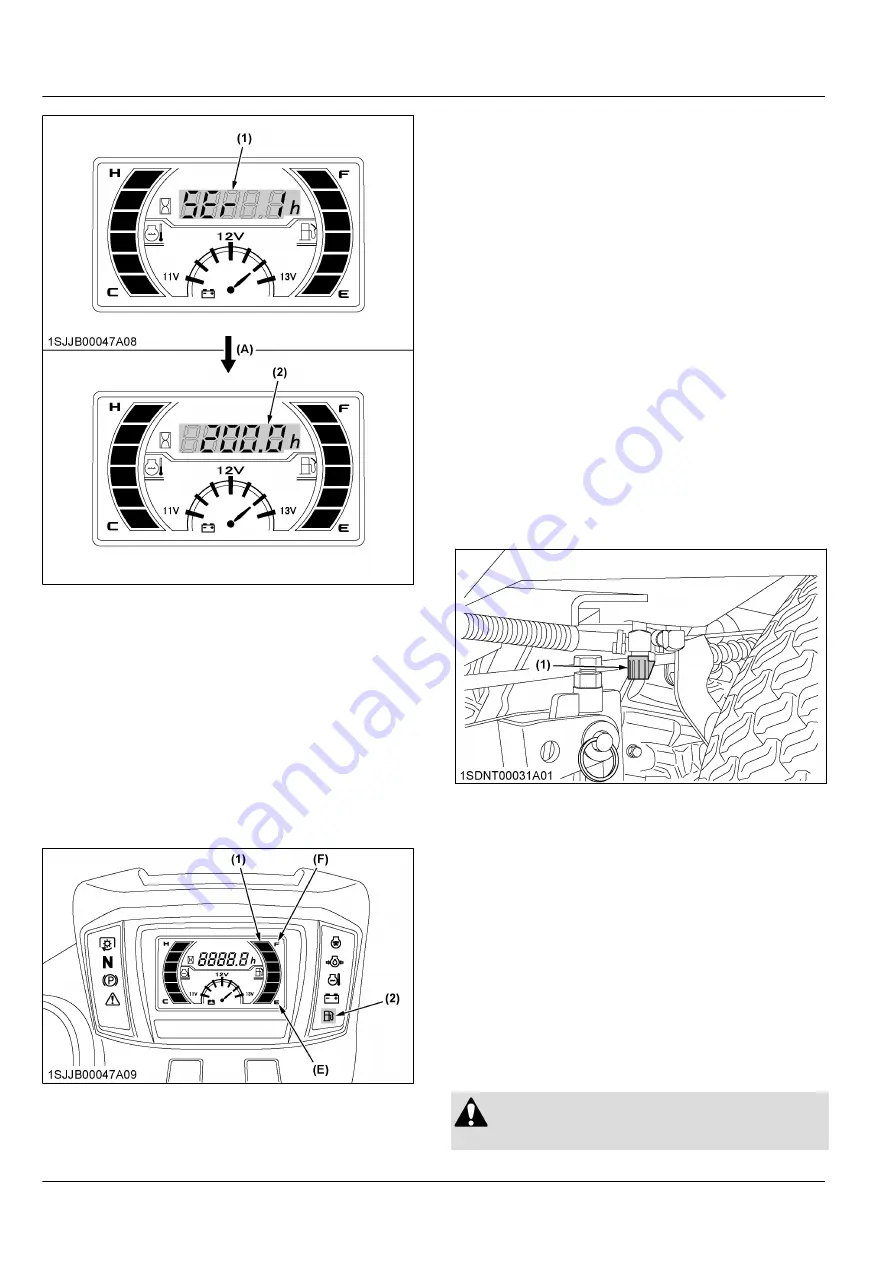
(1) Service code
(2) Hours used
(A) At 10 seconds after the serv-
ice code has displayed.
6. Overheat alarm
If the temperature of the coolant rises to overheat
temperature, the overheat alarm whistles.
Check the machine by reading the troubleshooting
section of this manual.
(See TROUBLESHOOTING on page 96.)
7. Fuel gauge, warning lamp and fuel
valve
(1) Fuel gauge
(2) Fuel level warning lamp
(E) “EMPTY”
(F) “FULL”
1. The fuel gauge shows the amount of fuel left in the
RH tank.
2. Fuel level warning lamp flashes when fuel amount
is below 7 L.
IMPORTANT :
• Fill the fuel tank only to bottom of the filler
neck.
• Be careful not to empty the fuel tank. Otherwise
air may enter the fuel system.
Should this happen, you must bleed the system.
(See Bleeding fuel system on page 84.)
• When refueling, basically fill both fuel tanks full.
• In the case you have a small amount of fuel, if
fuel is still in the fuel tank RH, fill the fuel tank
LH first.
• The fuel gauge shows the fuel level of fuel tank
RH. When the fuel gauge flashes, fill fuel as
soon as possible.
• When the fuel gauge flashes, do not fill fuel on a
slope. Fuel can absorb air and the engine can
stall.
• If the engine stalled with some remaining in the
fuel tank RH, close the fuel valve of fuel tank LH
and you can operate. (Refer to the following
figures.)
(1) Fuel valve
COLD WEATHER STARTING
• When the ambient temperature is below -5
℃
and
the engine is very cold. (If the engine fails to start
after 10 seconds, turn off the key for 30 seconds.),
then repeat steps 7 and 8. Details regarding steps 7
and 8 can be found in a different section.
(See STARTING THE ENGINE on page 27.)
• To protect the battery and the starter, make sure not
to turn the starter continuously for more than 10
seconds.
WARMING UP THE ENGINE
WARNING
To avoid serious injury or death:
OPERATING THE ENGINE
LCD MONITOR
32
ZD1211,ZD1221


